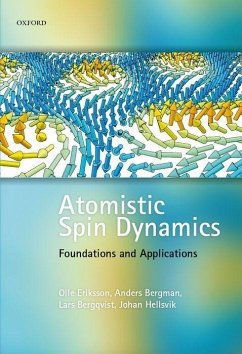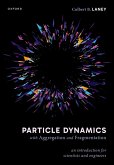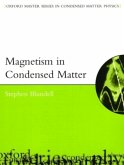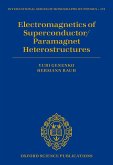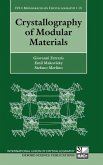- Gebundenes Buch
- Merkliste
- Auf die Merkliste
- Bewerten Bewerten
- Teilen
- Produkt teilen
- Produkterinnerung
- Produkterinnerung
Several large experimental facilities that focus on detection and probing magnetization dynamics have been realized in Europe, USA and Japan. This book covers theoretical and practical aspects of the vibrant and emerging research field of magnetization dynamics.
Andere Kunden interessierten sich auch für
![The Atomistic Nature of Crystal Growth The Atomistic Nature of Crystal Growth]() Boyan MutaftschievThe Atomistic Nature of Crystal Growth149,99 €
Boyan MutaftschievThe Atomistic Nature of Crystal Growth149,99 €![Particle Dynamics with Aggregation and Fragmentation Particle Dynamics with Aggregation and Fragmentation]() Culbert B LaneyParticle Dynamics with Aggregation and Fragmentation157,99 €
Culbert B LaneyParticle Dynamics with Aggregation and Fragmentation157,99 €![Atomistic Properties of Solids Atomistic Properties of Solids]() Dinker B. SirdeshmukhAtomistic Properties of Solids116,99 €
Dinker B. SirdeshmukhAtomistic Properties of Solids116,99 €![Magnetism in Condensed Matter Magnetism in Condensed Matter]() Stephen J. BlundellMagnetism in Condensed Matter57,99 €
Stephen J. BlundellMagnetism in Condensed Matter57,99 €![Electromagnetics of Superconductor/Paramagnet Heterostructures Electromagnetics of Superconductor/Paramagnet Heterostructures]() Yuri GenenkoElectromagnetics of Superconductor/Paramagnet Heterostructures136,99 €
Yuri GenenkoElectromagnetics of Superconductor/Paramagnet Heterostructures136,99 €![Big Science, Innovation, and Societal Contributions Big Science, Innovation, and Societal Contributions]() Big Science, Innovation, and Societal Contributions46,99 €
Big Science, Innovation, and Societal Contributions46,99 €![Crystallography of Modular Materials Crystallography of Modular Materials]() Giovanni FerrarisCrystallography of Modular Materials245,99 €
Giovanni FerrarisCrystallography of Modular Materials245,99 €-
-
-
Several large experimental facilities that focus on detection and probing magnetization dynamics have been realized in Europe, USA and Japan. This book covers theoretical and practical aspects of the vibrant and emerging research field of magnetization dynamics.
Produktdetails
- Produktdetails
- Verlag: Oxford University Press (UK)
- Seitenzahl: 266
- Erscheinungstermin: 23. April 2017
- Englisch
- Abmessung: 251mm x 174mm x 20mm
- Gewicht: 682g
- ISBN-13: 9780198788669
- ISBN-10: 0198788665
- Artikelnr.: 47864680
- Herstellerkennzeichnung
- Libri GmbH
- Europaallee 1
- 36244 Bad Hersfeld
- gpsr@libri.de
- Verlag: Oxford University Press (UK)
- Seitenzahl: 266
- Erscheinungstermin: 23. April 2017
- Englisch
- Abmessung: 251mm x 174mm x 20mm
- Gewicht: 682g
- ISBN-13: 9780198788669
- ISBN-10: 0198788665
- Artikelnr.: 47864680
- Herstellerkennzeichnung
- Libri GmbH
- Europaallee 1
- 36244 Bad Hersfeld
- gpsr@libri.de
Olle Eriksson received his PhD at the Physics Department, Uppsala University, in 1989. After spending three years in Los Alamos as a post doc he returned to the Physics Department, Uppsala University in 1992 where, he has worked ever since. Eriksson's research interests lies in materials theory, electronic structure theory, correlated electron physics, as well as theory of magnetism and magnetic materials. He has been active in this field for over thirty years. Eriksson received a chair professorship in Theoretical Magnetism, in 2002. Anders Bergman received his PhD in Physics at Uppsala University in 2006 on the subject of magnetic properties in nanostructured materials. After the PhD he has had postdoc positions at CEA Grenoble, France, KTH Royal Institute of Technology, Stockholm and at Uppsala University. Currently Dr. Bergman is a researcher at Uppsala University where his main topics includes method development of electronic structure calculations and numerical studies of the magnetization dynamics of low-dimensional systems, topological magnets and chiral magnetis and related systems relevant for information processing applications. Lars Bergqvist received his Ph D in physics at Uppsala University 2005. He was a postdoc at Research Center Julich, Germany between 2005-2009, assistant professor at Uppsala University between 2009-2010 and since 2010 situated at KTH Royal Institute of Technology. His present research interests are energy efficient materials, in particular thermoelectrics, and magnetization dynamics in low dimensional and bulk systems with special focus on method development of finite-temperature magnetism. Johan Hellsvik received his PhD in physics from Uppsala University in 2011. He has been a postdoc at CNR-SPIN, L'Aquila, and at ISC-CNR Sapienza, Rome. Early research projects involved studies on the spin dynamics of spin glasses and diluted magnetic semiconductors. His present research activity is on the topics of multiferroic materials, ultrafast magnetization dynamics, and frustrated magnetism.
Part I: Density Functional Theory and Its Applications
1: Density Functional Theory
2: Aspects of the solid state
3: Applications of density functional theory
Part II: Equation of Motion for Atomistic Spin-Dynamics
4: The atomistic spin-dynamics equation of motion
5: Spin dynamics at finite temperature
6: The damping term, from first principles
7: Implementation
Part III: Applications
8: Ferromagnetic resonance
9: Magnons
10: Skyrmions
11: Ultrafast switching dynamics
Part IV: Conclusions and Outlook
12: Outlook on magnetisation dynamics
Part V: Bibliography and Index
1: Density Functional Theory
2: Aspects of the solid state
3: Applications of density functional theory
Part II: Equation of Motion for Atomistic Spin-Dynamics
4: The atomistic spin-dynamics equation of motion
5: Spin dynamics at finite temperature
6: The damping term, from first principles
7: Implementation
Part III: Applications
8: Ferromagnetic resonance
9: Magnons
10: Skyrmions
11: Ultrafast switching dynamics
Part IV: Conclusions and Outlook
12: Outlook on magnetisation dynamics
Part V: Bibliography and Index
Part I: Density Functional Theory and Its Applications
1: Density Functional Theory
2: Aspects of the solid state
3: Applications of density functional theory
Part II: Equation of Motion for Atomistic Spin-Dynamics
4: The atomistic spin-dynamics equation of motion
5: Spin dynamics at finite temperature
6: The damping term, from first principles
7: Implementation
Part III: Applications
8: Ferromagnetic resonance
9: Magnons
10: Skyrmions
11: Ultrafast switching dynamics
Part IV: Conclusions and Outlook
12: Outlook on magnetisation dynamics
Part V: Bibliography and Index
1: Density Functional Theory
2: Aspects of the solid state
3: Applications of density functional theory
Part II: Equation of Motion for Atomistic Spin-Dynamics
4: The atomistic spin-dynamics equation of motion
5: Spin dynamics at finite temperature
6: The damping term, from first principles
7: Implementation
Part III: Applications
8: Ferromagnetic resonance
9: Magnons
10: Skyrmions
11: Ultrafast switching dynamics
Part IV: Conclusions and Outlook
12: Outlook on magnetisation dynamics
Part V: Bibliography and Index

